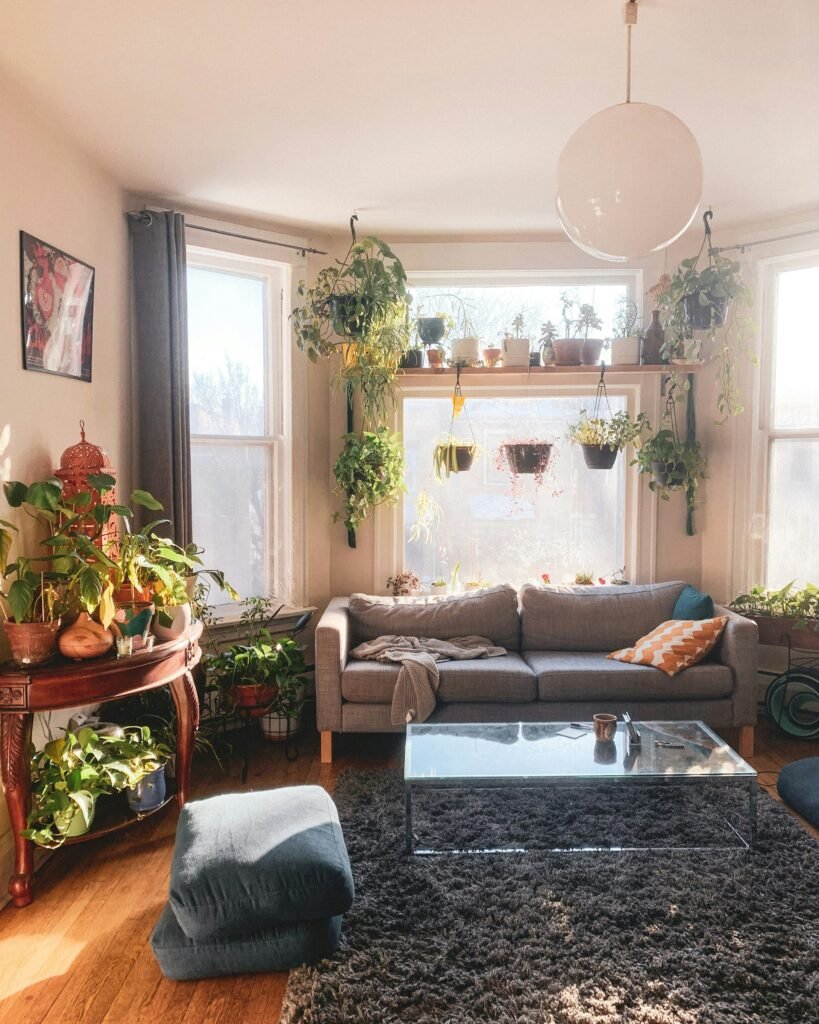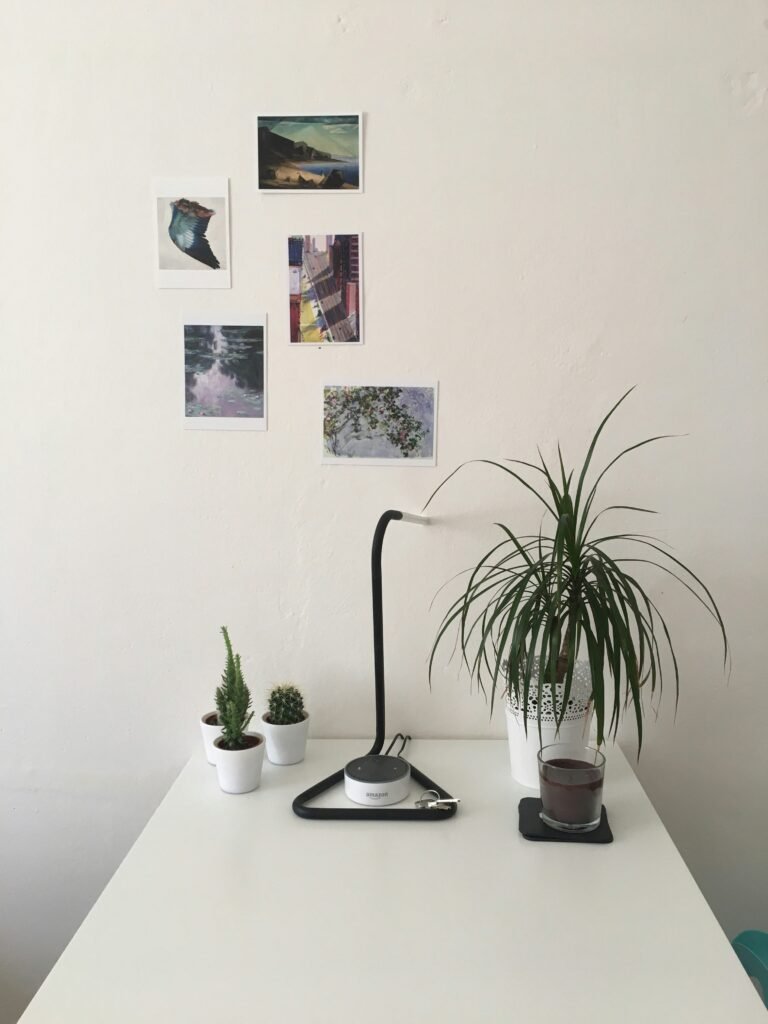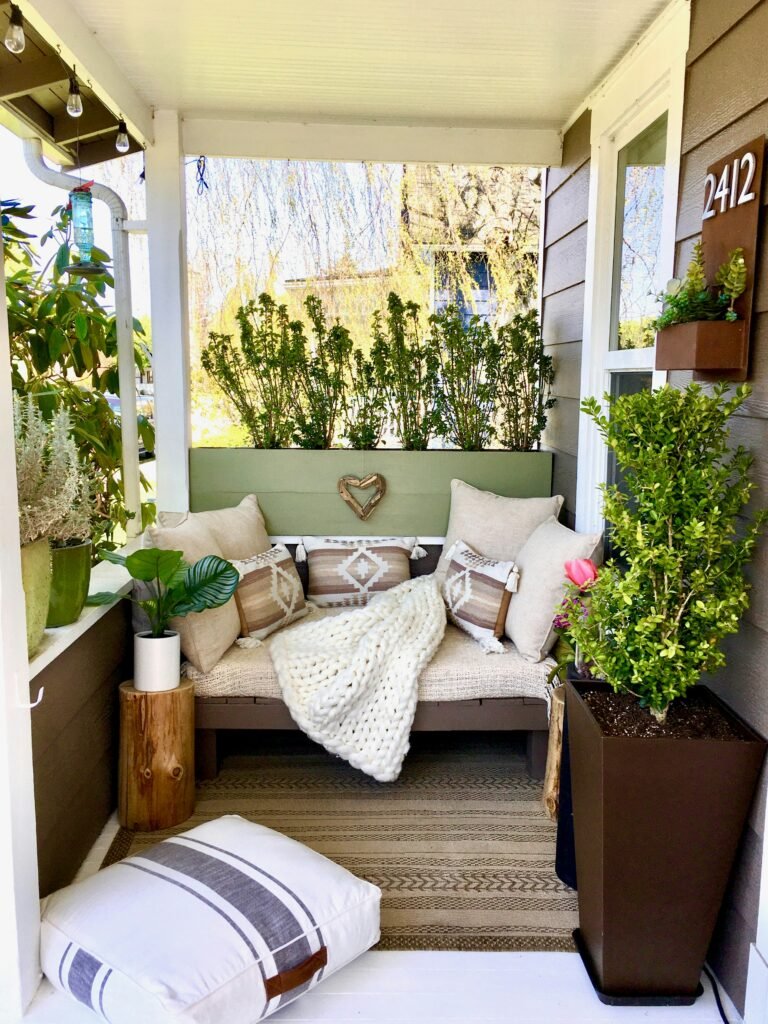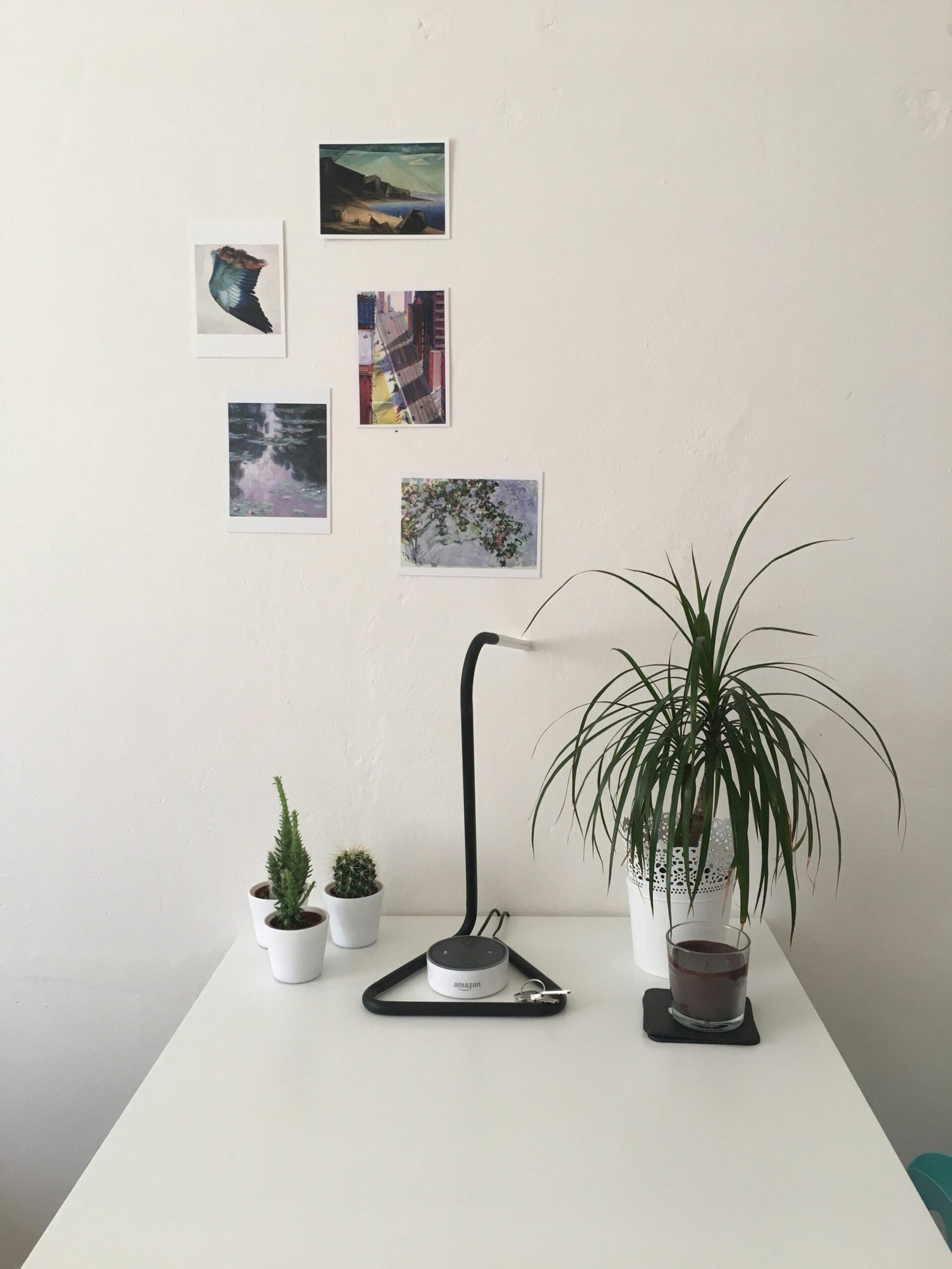Do you ever feel like your small apartment has more potential than space?
What Are Some Modern Home Decor Ideas For Small Apartments?
You can make a small apartment feel modern, functional, and spacious without spending a fortune or sacrificing style. This article gives you practical, stylish ideas that work specifically for small living spaces, organized so you can pick and apply what fits your home and lifestyle.
Principles for Modern Small-Space Design
Start with a few guiding principles so your choices stay consistent and purposeful. These ideas help you prioritize what to keep, what to buy, and how to arrange things for a modern look.
- Keep lines clean and clutter minimal so spaces read larger and calmer.
- Favor multifunctional items to maximize usability per square foot.
- Use scale and proportion to avoid oversized pieces that overpower the room.
- Consider light, color, and reflective surfaces to enhance perceived space.
- Integrate storage into design so aesthetics and function work together.
Planning Your Layout
A well-planned layout is the foundation of small-space design. Before you buy anything, sketch a floor plan or use an app to map the room and major furniture pieces.
Think about primary circulation paths and anchor furniture around them. You’ll want to leave clear pathways so the room feels open. Measure door swings, windows, and potential sightlines so the arrangement flows naturally.
Zoning Without Walls
Zoning helps you create function areas in a studio or open-plan apartment. You can define zones with rugs, furniture placement, lighting, or a low bookcase that acts as a divider.
This makes the space feel intentional and prevents a one-purpose look. Keep transitions soft—use consistent flooring or colors across zones to maintain cohesion.
Color Palette and Finishes
Color affects perceived size and mood. A modern small apartment benefits from a cohesive palette that enhances light and reflects personality without becoming busy.
- Light neutrals like warm whites, soft grays, and beige expand the visual field.
- Contrast with one or two accent colors for depth and character.
- Matte finishes on walls are forgiving; use subtle sheen for trims or cabinetry to add visual interest.
Using Color Strategically
You can use darker colors on a single wall, under cabinets, or on lower walls to ground a space without shrinking it. Accent colors should be used sparingly in textiles, art, or small furniture pieces.
Choose finishes that coordinate—brushed metals, warm woods, or black accents—to create a modern, deliberate look.
Furniture: Scale and Selection
Small apartments demand furniture chosen for scale, proportion, and multi-function. Opt for pieces with exposed legs and open bases to maintain sightlines and make the floor area feel continuous.
Essential Pieces for a Modern Small Apartment
You don’t need a lot of furniture—just the right items:
- A compact sofa or loveseat with a low back.
- A small dining table or extendable table.
- A bed with built-in storage or a raised platform.
- Slimline consoles and nesting tables for flexibility.
Multifunctional Furniture Ideas
Choose furniture that does more than one job. Here are high-impact options:
- Sofa bed or daybed for guests and lounging.
- Fold-out dining table or wall-mounted drop-leaf table.
- Ottoman with storage, coffee table with drawers, or bench with cubbies.
- Murphy bed or loft bed to free floor space.

Storage Solutions That Blend With Decor
You’ll need storage that’s both functional and visually integrated. Built-in or customized storage is ideal, but there are many stylish modular solutions that fit your budget.
Smart Storage Placements
Use vertical space and less obvious places for storage:
- Above-door shelves for seasonal items.
- Under-bed drawers and bed lifts.
- Over-the-toilet shelving in bathrooms.
- Slim cabinets behind doors and narrow wall niches.
Storage Ideas Table
| Location | Solution | Best For |
|---|---|---|
| Living room | Built-in shelves or low media console | Books, media, decor |
| Bedroom | Under-bed storage, wall-mounted wardrobes | Clothing, linens |
| Entryway | Wall hooks, narrow console, shoe cabinet | Outerwear, keys |
| Kitchen | Vertical racks, magnetic strips, stackable containers | Spices, utensils, small appliances |
| Bathroom | Recessed medicine cabinet, floating shelves | Toiletries, towels |
Lighting Design for Depth and Ambience
Good lighting makes small spaces feel larger and more layered. Use multiple light sources at different heights to create depth and avoid harsh overhead-only lighting.
Layered Lighting Approach
Combine these elements for a balanced scheme:
- Ambient lighting (overhead or recessed) to illuminate the whole space.
- Task lighting (under-cabinet kitchen lights, reading lamps) for focused needs.
- Accent lighting (LED strips, wall sconces) to highlight art or architecture.
Choose fixtures that contribute to the modern aesthetic—sleek metal pendants, minimalist floor lamps, and integrated LED solutions work well.
Mirrors and Reflective Surfaces
Mirrors are a classic small-space trick because they bounce light and create the illusion of depth. Use them purposefully so they don’t create clutter.
- Place a large mirror opposite a window to amplify natural light.
- Consider mirrored closet doors or a series of smaller mirrors as art.
- Use glass or glossy finishes (backsplashes, cabinet fronts) sparingly to reflect light.
Textiles: Softness Without Bulk
Textiles add warmth and personal style but can also make a small apartment feel crowded if you overdo them. Choose lightweight fabrics and keep patterns restrained.
Tips for Textile Choices
- Rugs: Use area rugs to define zones; pick low-pile rugs to avoid visual heaviness.
- Curtains: Install curtains close to the ceiling and extend the rod beyond the window frame to make windows look larger.
- Cushions and throws: Limit to a few pieces with color or texture accents to add interest without clutter.
Decluttering and Curated Minimalism
A modern small apartment thrives on intentional editing. Keep surfaces clear and rotate décor seasonally so you maintain freshness without accumulation.
- Adopt a one-in-one-out policy for decor and clothing.
- Use closed storage to hide everyday items and maintain calm surfaces.
- Display a few curated items that reflect your personality instead of many small objects.

Wall-Mounted and Floating Options
Wall-mounted furniture keeps floors open and makes cleaning easier. Floating shelves, wall-mounted desks, and cantilevered consoles are modern and practical for small apartments.
- Floating desks can transform a corridor or corner into a workspace.
- Wall-mounted nightstands free up bedroom floor space.
- Floating TV consoles hide cables and create a light, airy look.
Kitchen Efficiency and Style
Kitchens in small apartments require careful choices to balance function and modern aesthetics. Streamline appliances, maximize vertical storage, and create efficient work triangles.
Kitchen Strategies
- Opt for integrated or slimline appliances that match cabinetry.
- Use open shelving sparingly to keep the kitchen airy.
- Add a fold-down or pull-out prep surface for extra workspace only when needed.
Small Kitchen Layout Table
| Layout Type | Best For | Modern Tips |
|---|---|---|
| Galley | Narrow footprint | Use light cabinets and under-cabinet lighting |
| Single-wall | Studios | Vertical storage and compact appliances |
| L-shaped | Open plan | Corner drawers and pull-out pantry |
| Kitchenette | Micro-units | Multi-use cooktop with oven combo |
Bathroom Upgrades for Small Spaces
Small bathrooms can be modern and spa-like with minor changes. Focus on light colors, glass, and smart storage.
- Use a glass shower screen instead of a curtain to keep sightlines open.
- Install a floating vanity with drawers for hidden storage.
- Add recessed shelving in the shower and above the toilet for toiletries.
Bedroom Design in Compact Apartments
Your bedroom should feel restful and uncluttered. Prioritize the bed and storage, and keep décor simple to encourage relaxation.
Space-Saving Bedroom Ideas
- Consider a platform bed with built-in drawers or a high bed with storage underneath.
- Use wall-mounted reading lights to free up nightstand space.
- Create a layered headboard wall with low-profile shelves for small items.
Multifunctional Rooms and Furniture
In a small apartment you’ll often combine functions—work, rest, cooking, and entertaining might coexist in one room. Plan for adaptable furniture that transitions easily.
- Use folding screens or curtains to separate a sleeping nook when needed.
- Select a sofa that becomes a guest bed or has storage for linens.
- Nesting tables and stackable chairs provide extra seating without taking permanent space.

Creating Visual Height
You can increase perceived height by drawing the eye upward. Techniques include ceiling paint choices, tall vertical art, and vertical storage.
- Paint trim and walls in similar hues to blur boundaries.
- Use vertical stripes or tall bookcases to emphasize height.
- Hang curtains higher than the window frame to elongate the wall.
Greenery and Plants
Plants make your apartment feel alive and fresh. Choose species that suit your light conditions and maintenance level.
- Small succulents and pothos are great for low-maintenance setups.
- Use wall planters or hanging pots to add green without sacrificing surfaces.
- Consider a single statement plant in a corner to anchor the space.
Art and Personalization
Art and personal items give your apartment character. Be intentional with placement and scale to avoid making rooms feel cluttered.
- Use larger pieces instead of many small ones to simplify and unify.
- Create a gallery wall with consistent frames and spacing for a curated look.
- Rotate art seasonally to keep the environment feeling new without extra purchases.
Flooring Continuity
Continuous flooring makes small apartments feel larger by creating an uninterrupted visual plane. Choose materials that fit your aesthetic and daily life.
- Light hardwood or wood-look vinyl broadens perception.
- Use uniform flooring across living and kitchen areas to avoid visual breaks.
- Add area rugs for zone definition and comfort without interrupting flow.
Window Treatments That Maximize Light
Window treatments should balance privacy with natural light. Your choices can significantly affect the mood and perceived size of a room.
- Sheer panels let in light and soften harsh sun while maintaining privacy.
- Blinds with slim profiles offer control without bulk.
- Layer a blackout roller behind light curtains for night privacy and daytime softness.
Small Balcony and Outdoor Spaces
If you have a small balcony, treat it as an extension of your living space by adding compact seating and multifunctional elements.
- Use foldable bistro sets or a bench with storage.
- Add a vertical garden or railing planter to bring greenery without using floor area.
- String lights or a small outdoor rug can make the space feel like a room.
Technology and Smart Solutions
Smart home devices can add convenience without taking up space. Integrate tech for lighting, climate, and entertainment in a way that preserves the minimalist look.
- Choose smart bulbs and switches for flexible lighting scenes.
- Use wireless speakers and streaming devices to eliminate bulky electronics.
- Opt for compact smart thermostats that integrate with your heating and cooling.
Budgeting and Prioritizing Purchases
You don’t need to do everything at once. Prioritize investments that increase functionality and comfort first, then layer in aesthetics.
- Spend more on a good mattress and a comfortable sofa because you’ll use them daily.
- Save on decor accents and replaceable textiles.
- Consider secondhand shops and online marketplaces for quality pieces at a lower price.
Budget Priorities Table
| Priority | Items to Invest In | Why |
|---|---|---|
| High | Mattress, sofa, versatile table | Daily use and comfort |
| Medium | Lighting, storage systems, rugs | Affect function and atmosphere |
| Low | Decorative objects, throw pillows | Easy to swap for little cost |
Shopping and Sourcing Tips
Look for flexible, modular pieces and measure carefully before you buy. Know the delivery and return policies so you don’t end up with oversized furniture.
- Test how furniture fits through doorways and staircases.
- Match scale to room measurements rather than photos.
- Use visual mock-ups with painter’s tape or cardboard to confirm fit.
Maintenance and Upkeep
A modern, tidy space feels better and lasts longer. Create simple routines so upkeep doesn’t become overwhelming.
- Declutter weekly to keep surfaces clear.
- Use storage labels and consistent categories to make tidying easier.
- Rotate soft furnishings and clean according to care instructions to maintain appearance.
Sample Layouts and Quick Ideas
Here are quick layout ideas for common small-apartment scenarios so you can visualize practical arrangements.
Studio Apartment
- Place the bed near a corner or in a nook and separate it with a low shelf.
- Position the sofa facing away from the bed to create a living area.
- Use a narrow console table behind the sofa for extra surface and storage.
One-Bedroom Apartment
- Keep the bedroom purely for rest—opt for more closed storage and a calming palette.
- Use a small dining set near the kitchen and a compact sofa in the living area.
- Add floating shelves in the hallway for keys and mail.
Compact Home Office Setup
- Mount a fold-down desk on an unused wall to create a workspace that disappears.
- Use a slim, mobile filing cart that slides under a desk when not in use.
- Position your desk near a window to benefit from natural light.
Final Checklist Before You Start
Before you rearrange or buy, run through this checklist so you stay focused and efficient in your design process.
- Measure your space, doors, windows, and ceiling height.
- Decide on a color palette and materials to guide purchases.
- Choose multifunctional furniture before single-purpose items.
- Plan lighting layers and electrical access points.
- Create a storage plan that integrates with furniture choices.
Closing Thoughts
You can have a modern, stylish small apartment that feels spacious, functional, and personalized without sacrificing comfort. By planning thoughtfully, choosing multifunctional pieces, maximizing light, and committing to careful editing, your apartment will support both your daily routines and your sense of home. Start with one small change—like adding a mirror or swapping out a bulky coffee table—and the momentum will make each following update easier and more intentional.
